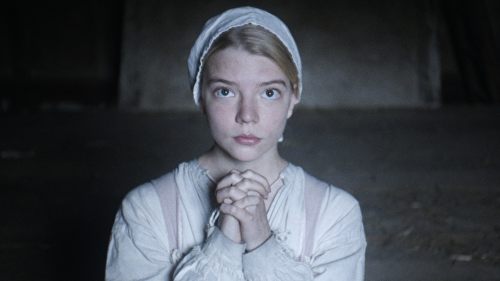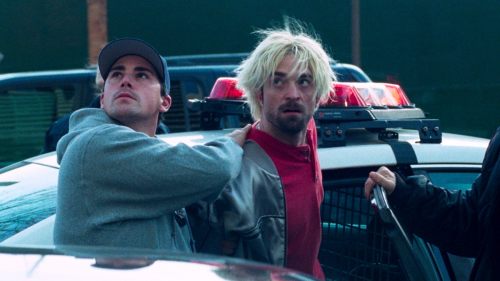The Real Life Horrors That Inform THE WITCH
SPOILERS for The Witch to follow.
If you don’t know that Robert Eggers’ The Witch takes place in New Hampshire, you might assume that it takes place in Massachusetts. That’s an understandable leap to make; the Salem Witch Trials rank among the Old Colony State’s most shameful legacies, so when you consider the title of Eggers’ film alongside its subtitle - “A New England Folktale” - Massachusetts seems like easy money for those inclined to bet on geography. But New England’s history with witch hunting hysteria means that The Witch could claim any part of the region as its setting, even if the religious brouhaha that led to the deaths* of twenty people fomented in Massachusetts: 17th century New England was, all told, an area littered with superstitions and inhabited by the superstitious.
Case in point: the film’s primary cast, comprised of a family of Puritan types led by their patriarch, William. William, like so many of his fellow reformed English Protestants, is a pious, God-fearing sort. In point of fact, he might be too pious, or maybe his flavor of piety does not suit the tastes of his colony’s leadership. The Witch commences as William stands adjudged before the local council of assistants for blasphemy, and is summarily exiled from the civilized world with his wife, Katherine, and their five children - Thomasin, Caleb, twins Mercy and Jonas, and their newborn brother - in tow. (For all that befalls the doomed septet as the film unfolds, the council’s decree might as well be a death sentence.)
The end result of William’s trial shouldn’t really come as much of a surprise (his defiance of the council notwithstanding, of course). Those damn Puritans were a strict and severely intolerant lot, and they made a regular practice of kicking people out of town on their asses for daring to follow religious paths that diverged from their own. This puts William, Katherine, Thomasin, and the others in good company with the likes Roger Williams and Anne Hutchinson; Williams was banished from the Massachusetts Bay Colony in 1635 for his vocal advocacy of religious freedom and the separation of church and state, while Hutchinson got the boot both for holding religious gatherings at her house, and for teaching men about the Bible. Granted, Williams went on to found Rhode Island in 1636, and that Hutchinson eventually settled Portsmouth a couple years later.
In light of their accomplishments, William’s decision to put down roots at the edge of the creepiest looking forest line he could possibly find is pretty shortsighted. Let’s be fair, though: not everyone has it in them to help build a town or establish an entire goddamn state. Regardless, the manner by which the film arrives at its dramatic backdrop is its first textual nod to Eggers’ chosen cultural era. The Witch’s supernatural elements are announced early on in its running time - we meet the witch as she lubes up her broomstick (aka the unlikeliest hallucinogen delivery system imaginable) with the butchered viscera of William and Katherine’s infant - but the shadow of religious discord hangs over the narrative even before the occult rears its ugly head and leads the family to torment and delirium. That, perhaps more so than the decrepit beldam living in the woods, gives the most forceful impression of period and place The Witch has to offer: it’s a testament to the ugly consequences of forced social alienation.
(Aside: The Witch does not elaborate very much as to the nature of William and Katherine’s crime, but whether they either fall short of Puritan standards of Christianity, or follow a variation on Christian dogma that is too hardline even for their peers, it’s hard not to see their banishment as religious persecution. When you acknowledge that their expulsion ultimately leads to their awful, lonely demises, the edict handed down to them in the film’s opening scene feels especially barbaric in respect to its ending.)
But there’s more that ties Eggers’ picture to New England than spiritual oppression. Notably, there is the forest itself. According to Bernice Murphy, author of The Rural Gothic in American Popular Culture: Backwoods Horror and Terror in the Wilderness, Puritan clergy saw woodland as the “devil’s den"; in The Great American Wolf, Bruce Hampton connects Puritan distaste for the wilds with a hostility toward wolves, and hostility toward wolves with the Bible. “Behold,” says Matthew 10:16, “I send you out as sheep in the midst of wolves.” If not for the fact that wolves preyed on the same animals colonists used for trade and sustenance, that nod in the New Testament pegged the beasts as enemies of the faith, and by extension makes their home into a playground of devilry. (Sounds like a lot of theological mumbo jumbo, but hey: you try walking around New England timberland after dark and see if the panic center of your brain doesn’t conjure up all sorts of menacing hocus pocus. Even now in 2016, when everyone has a smart phone and nobody has to forage for their dinner outside of taking a quick trip to Market Basket, New England is a pretty eerie place after dusk.)
Eggers is keenly aware that the locale of his film rests on a nightmarish vein of isolationist paranoia and Biblical dread, so he indulges in only a handful of folkloric generalities. Hares, for example, are popularly associated with witchcraft as a totem of feminine power; they play the role of familiar and also, in a pinch, make an innocuous disguise for any witch with shapeshifting savvy, so think twice about the ominously cute bunny that shows up every so often in The Witch to stare down the cast from afar. On the other hand, goats, such as good old Black Phillip, tend to be connected with Satan thanks once again to the Gospel of Matthew; their unbridled and messy breeding patterns probably don’t help soften the connection. (And c’mon: you can’t make a movie about witchcraft and leave out broomsticks.)
But The Witch couches these tropes within the chronicled particulars of New England’s colonization. Unlike American Horror Story: Coven, Eggers has crafted a rich, authentic, and deeply unsettling film where imagery is window dressing and symbolism is merely a component of the film’s narrative fabric. Together, they are supporting details to the film’s true source of terror: history itself.



